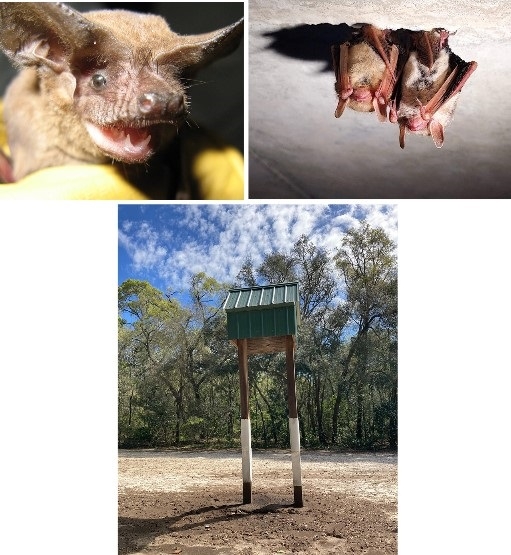Remove bats from buildings through April 15; bat maternity season runs April 16 - August 14
Florida Fish and Wildlife Conservation Commission (FWC)
Florida’s 13 bat species typically roost in trees, caves or other natural spaces, but are sometimes attracted to human-made structures, including buildings undergoing construction. If you have bats roosting in buildings, the Florida Fish and Wildlife Conservation Commission (FWC) is sharing the reminder that April 15 is the last day to legally exclude bats from buildings without a permit.
Florida’s bat maternity season, the time when most of our state’s native and beneficial bats give birth and raise their young, starts on April 16 and runs through August 14 each year. During bat maternity season, it is illegal to block bats from their roosts, as this prevents flightless young from being trapped inside structures, which isn’t good for people or bats.
If you have bats roosting in your house or building, the most effective and only legal method to remove roosting bats from structures is the use of exclusion devices, which allow bats to safely exit a structure but block them from returning to their roosts. It is only legal to use exclusion devices from August 15 through April 15, outside of the maternity season. Permits are required to use exclusion devices outside of those dates.
It is illegal in Florida to kill or harm bats, so exclusion guidelines were developed to ensure bats are removed safely and effectively from buildings outside of maternity season. Bat exclusion is a multi-step process that begins by identifying all potential bat entry and exit points in a building. To legally exclude bats, exclusion devices must be installed on key exit points, left up for a minimum of four nights, and the exclusion must be conducted when the overnight temperature is forecast to be 50°F or above.
Bats are highly beneficial, both ecologically and economically. Florida’s bats are insectivores. A single bat eats up to hundreds of insects at night, including mosquitoes and other garden and agricultural pests. Worldwide, bats serve critical functions due to their roles in insect pest control, and as pollinators and seed dispersers; their guano (body waste) can be a valuable fertilizer.
Florida’s native bat populations include endangered species such as the Florida bonneted bat. Want to help our bats? There are several ways that Florida residents and visitors can support bat conservation:
• Preserve natural roost sites, including trees with cavities or peeling bark.
• Leave dead fronds on palm trees to provide roosting spots for bats.
• Install a bat house on your property.
• Report unusual bat behavior and sick or dead bats at MyFWC.com/BatMortality.
For more information about how to properly exclude bats or how to bat-proof your home, visit myfwc.com/conservation/you-conserve/wildlife/bats/bats-in-buildings.
If you have questions or need more assistance, contact your closest FWC Regional Office to speak with a wildlife assistance biologist. Find your regional office at myfwc.com/contact/fwc-office/regional-offices.
Learn more about bats in Florida and ways you can help them thrive by visiting myfwc.com/bats.
